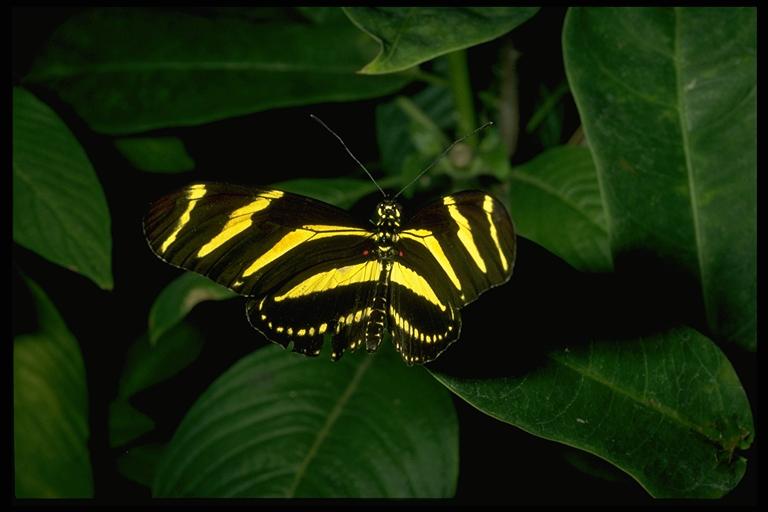
Gulf fritillary, Agraulis vanillae incarnata (Riley) (Lepidoptera: Nymphalidae), adult. Photo by Drees.
Common Name: Gulf fritillary
Scientific Name: Agraulis vanillae incarnata (Riley)
Order: Lepidoptera
Description: This species is not a true fritillary, are sometimes separated into a separate family of long-butterflies (Heliconiidae) rather than being included in the brushfooted butterflies (Nymphalidae). Adults, with a 3 inch wingspan, are brilliant orange with black markings on the elongated wings. The underside of the hind wing and tip of the forewing have prominent silver spots and brown markings. Fully grown larvae is about 1-1/2 inches long, gray to brown-black with three pairs of reddish-brown lengthwise stripes. The head and body segments bear have black, branched spines.
Another subspecies, Agraulis vanillae nigrior Michener, occurs in the southeast, with darker black markings. Seven species of Heliconidae butterflies, called “longwings”, occur in Texas. The Mexican silverspot, Dione moneta poeyi Butler, is similar to the gulf fritillary, but the upper wing surfaces are yellow-brown and not marked with white spots. Underneath, the silver spots are not rimmed with black. Its range is restricted to the Rio Grande Valley and occasionally far west Texas. Other distinctive members of this family include the zebra longwing, Heliconius charitonius vazquezae Comstock & Brown, a jet black butterfly with brilliant narrow yellow stripes on wings which have a 3 to 3-1/2 inch wingspan. The Julia longwing, Dryas julia moderata Stichel is predominantly brownish- to yellowish-orange with only darker hazy markings on the upper surface of the forewing and wing margins. Caterpillars of all of these species feed on passion flower leaves.
Life Cycle: Adult females lay elongated, ribbed, buff yellow eggs on host plants. Larvae develop through several stages (instars) before forming a brown chrysalis.

Gulf fritillary, Agraulis vanillae incarnata (Riley) (Lepidoptera: Nymphalidae), caterpillar. Photo by Drees.
Habitat and Food Source(s): Caterpillars have chewing mouthparts. Adults have siphoning mouths. Caterpillars feed on leaves of passion flower, Passiflora spp. Adults visit numerous flowers and migrate northward and feed on nectar.
Pest Status: Harmless.
For additional information, contact your local Texas A&M AgriLife Extension Service agent or search for other state Extension offices.
Literature: Howe 1975; Neck 1996; Wright 1993.

Zebra longwing, Heliconius charitonius vazquezae Comstock & Brown (Lepidoptera: Heliconiidae). Photo by Drees.